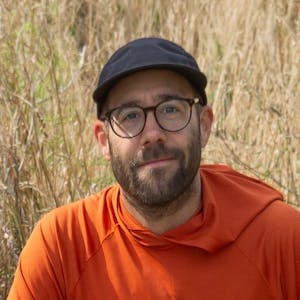A wrap of the biggest stories and best writing about the outdoors from New Zealand and around the world.
Bookings for New Zealand’s Great Walks will open from May 28 to June 6 for the next season. The Department of Conservation (DOC) said while the most popular tracks such as Milford and Routeburn book out fast, walks such as Abel Tasman, Heaphy and Lake Waikaremoana have greater capacity.
This year DOC has combined the booking systems so now only one account is needed to book Great Walks and all other accommodation.
“2023/24 statistics show total Great Walk bed-nights were up 7.7% on the previous year with 128,115 bed-nights compared to 118,921 in the previous year. The numbers were also up 7.1% compared to the pre-COVID summer of 2019/20 of 119,581 bed-nights,” says director of heritage and visitors Cat Wilson.
Here’s when bookings open:
- May 28 – Milford Track, Lake Waikaremoana Track at 9:30 am.
- May 30 – Abel Tasman Coast Track, Rakiura Track, Whanganui Journey at 9:30 am.
- June 5 – Routeburn Track, Paparoa Track at 9:30 am.
- June 6 – Kepler Track, Heaphy Track, Tongariro Northern Circuit 9:30 am.
Australian Alps hiker reveals what’s changed after a 25-year gap between journeys
In 1997, British ex-pat turned alpine adventurer Huw Kingston traversed the Australian Alps entire length. Twenty-five years later he decided to do it again on a 51-day journey, stopping and skiing at each of the 12 snow resorts.
Along the way, he witnessed first-hand the changes in climate and snow cover facing ski communities. “Obviously the topography hasn’t changed and the mountains haven’t changed, but the snow cover has, which actually, in many ways, made it harder to get through,” Mr Kingston said.
“You’re trying to ski as much as you can across that alpine land. But if the snow’s not there at those lower altitudes you’re bashing through thick bush with skis on your backpack — which is a bit like carrying a crucifix, catching on everything above you.”
While the impact of climate change on Australia’s relatively low-altitude alpine region is well-documented, Mr Kingston said he hoped his journey would educate people on the fragility of the region and why it should be protected. A feature film of Mr Kingston’s epic trek, Alpine Odyssey, is being released in June. Read the full story from ABC News.
Walking access reinstatement options announced for Cathedral Cove
DOC has announced the options being explored to reinstate walking access to Coromandel’s Cathedral Cove.
For walking access to the beach, three options are under consideration – one is a short-term fix which would see construction of new steps and a boardwalk to reinstate a section of the existing track, while the two others would be long-term repairs involving installation of new infrastructure.
The two long-term options would require significant investment and also the installation of a new potentially cantilevered staircase and steps to the beach – and therefore take longer to design, procure and complete.
Other options explored as part of the development work include visitor entry points from the Hahei Short Walk, making best use of an existing entrance at Grange Rd, and whether access over adjacent farmland is feasible.
A presentation giving an overview of the options being explored has been added to the DOC website Cathedral Cove and Hahei updates web page.
24 hours of running, solving riddles around Canterbury high country
TWALK – the 24-hour walk – has been running since 1967. It is organised solely by volunteers from the Canterbury University Tramping Club. By the end of the event, participants typically hike 100 kilometres, completing five legs, each around 10km to 20km long. Along the way, the teams must solve cryptic clues.
The club selects a secret location, negotiating with local farmers for access, to host the event. This year, the event was held in Mesopotamia, near the Rangitata River. The winning team called themselves Pack of Rafters. “Every year we aim to find somewhere new and this comes with many additional challenges managing the event in remote, unused-before locations,” event organiser Alex Monckton said.
CUTC president Nick Slegers said the event had been growing yearly, with this year and last, being the biggest TWALK events ever. “We get a diverse range of participants, more so than your typical club rogaine event. It’s open to the public and is a way to give thanks to our outdoors community that helps us do so much.” Read the full story from RNZ.
Antarctica’s ozone layer is worst it’s been since 1970s
Seal pups and fledgling penguins could be at increased risk of sunburn and skin cancers as the ozone layer hole above Antarctica remains open into December, creating dangerously high levels of ultraviolet radiation.
The findings are based on new research conducted by an international team from the United Nations Environmental Effects Assessment Panel, and led by University of Wollongong climate change biologist Professor Sharon Robinson.
For the past four years, the ozone hole above Antarctica has failed to close before summer, causing UV radiation levels in Antarctica as extreme as 14 – similar levels to a Sydney summer.
“Whilst ozone is recovering, we’ve seen these four years of ozone holes that have been large but also have [stayed open] into December, which is the thing that’s most concerning for us as biologists,” Robinson said.
Robinson and her team said increased UV radiation in early summer could be “particularly damaging” to penguin chicks and seal pups, both of which are on the ice in late spring. Read the full story from the Sydney Morning Herald.







